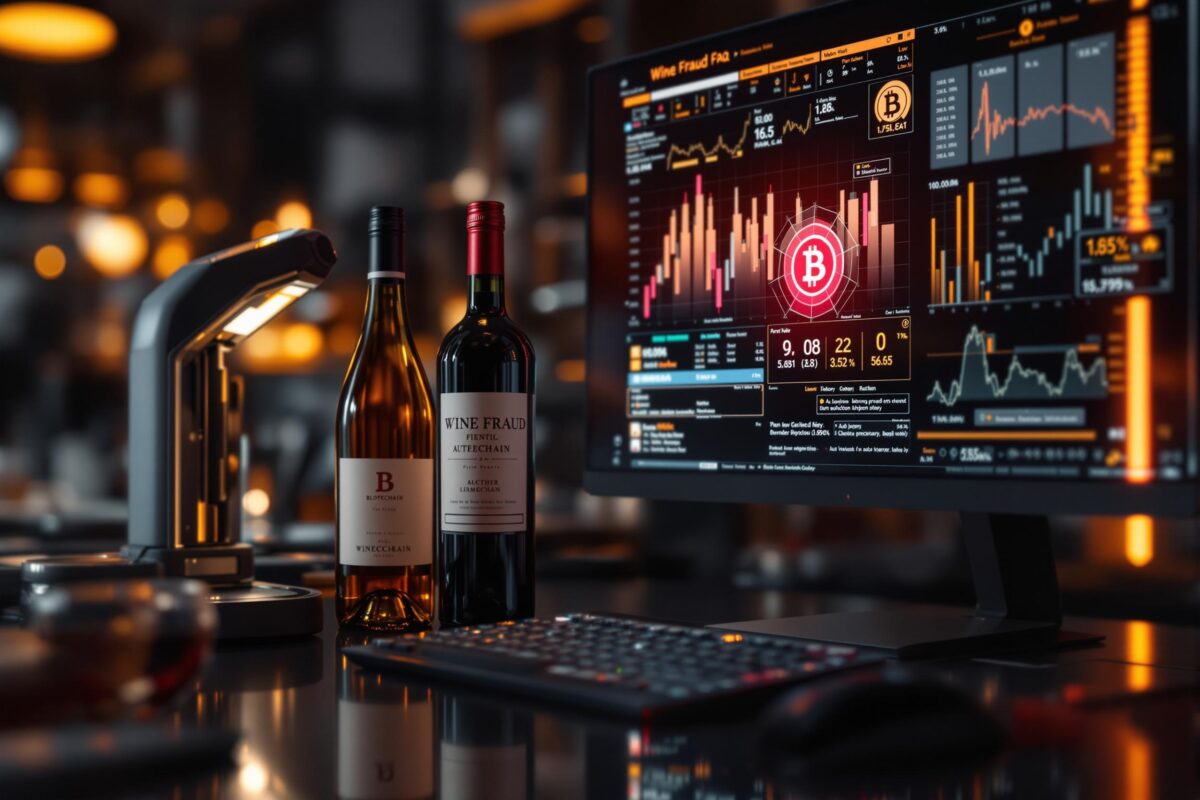The global wine industry, steeped in tradition and prestige, faces a growing threat: counterfeit wine. From dismantled fake Rioja networks to multimillion-dollar Burgundy schemes, headlines reveal alarmingly sophisticated wine fraud. Counterfeit wine represents a significant market portion, causing substantial financial losses and eroding consumer trust. This isn’t just about money; it’s about potential health risks and damage to legitimate producers. Combating this requires a multi-pronged approach, using innovative authentication technology and robust detection methods to protect wine integrity and consumer confidence. This article explores the intricacies of wine fraud—its causes, consequences, and cutting-edge solutions.
Trend Analysis: Innovations Redefining Wine Authentication
Groundbreaking innovations are revolutionizing the fight against counterfeit wine. Traditional methods, though relevant, are now enhanced by technologies like blockchain, AI, and isotopic fingerprinting. These advancements provide unprecedented security and transparency, making it tougher for counterfeiters.
Blockchain for Wine Traceability and Authentication
Blockchain offers a decentralized, immutable ledger, perfect for tracking wine through its supply chain. Each bottle receives a unique digital ID, recording origin, production details, and ownership history. Accessible to producers, distributors, and consumers, this transparent record minimizes fraud opportunities. Blockchain ensures traceability, enhancing wine integrity from vineyard to glass. Imagine scanning a QR code on a bottle to instantly verify its provenance—that’s the power of blockchain.
AI-Powered Wine Fraud Detection in Online Marketplaces
Online wine sales have opened new avenues for counterfeiters. AI-powered systems are vital for detection and mitigation. Sophisticated algorithms analyze online sales data, finding suspicious patterns and anomalies that suggest counterfeiting. These systems detect fake labels, identify unauthorized sellers, and monitor online marketplaces for suspect listings. AI is a crucial defense in our digital world. Think of it as a virtual detective, constantly patrolling the web for fraudulent wine activity.
Isotopic Fingerprinting: A Scientific Approach to Wine Provenance
Isotopic fingerprinting scientifically authenticates wine. It analyzes a wine’s isotopic composition to verify its origin. Examining stable isotope ratios (oxygen, hydrogen, carbon), influenced by location, soil, and climate, offers a virtually tamper-proof method of confirming provenance. This powerful tool fights counterfeiting and assures quality.
In-Depth Issue Breakdown: Causes, Consequences, and Case Studies of Wine Fraud
Wine fraud is complex, driven by a confluence of factors, with significant consequences for the industry and consumers. Understanding the root causes is crucial for developing effective countermeasures.
Root Causes of Counterfeit Wine: Profit and Opportunity
Profit drives wine fraud. The high value of rare and collectible wines creates lucrative opportunities. Demand often surpasses supply, further incentivizing illicit activities. Counterfeiters exploit this by creating fake versions of expensive labels, capitalizing on the desire for luxury. The sophistication of some operations demonstrates the substantial profits involved. Why risk other crimes when you can forge a label and sell a fake vintage for thousands?
Consequences of Wine Fraud: Economic and Reputational Damage
Wine fraud’s consequences are far-reaching. Reputational damage can be severe and long-lasting. Consumer trust erodes when they encounter fakes. Financial losses impact everyone—wineries, distributors, retailers, and consumers. Counterfeit wine can even pose health risks if harmful ingredients are used. The Rioja network’s dismantling demonstrates the organized nature and potential impact of wine fraud. Burgundy’s multimillion-dollar schemes highlight even prestigious regions’ vulnerability.
Case Studies: Rioja Network Dismantling and Burgundy Schemes
Real-world examples illustrate wine fraud’s scale and pervasiveness. The Rioja network’s takedown exposed a sophisticated operation producing and distributing counterfeit wines on a large scale. Burgundy’s schemes involved fraudulently reproducing labels and packaging of highly sought-after wines, deceiving global collectors and investors. These cases underscore the need for international cooperation, vigilance, and innovative detection methods.
Innovative Solutions: Approaches to Wine Authentication and Integrity
Effectively combating counterfeit wine requires a multi-layered approach, integrating technology and proactive measures across the supply chain. Here’s a breakdown:
Step 1: Securing the Wine Supply Chain with Traceability Systems
Robust traceability from vineyard to bottle is paramount. Meticulous record-keeping at every production stage is crucial. Blockchain technology can dramatically enhance supply chain transparency and security.
For connoisseurs seeking guaranteed authenticity, reputable platforms like TourDeWine provide peace of mind and a genuine experience.
